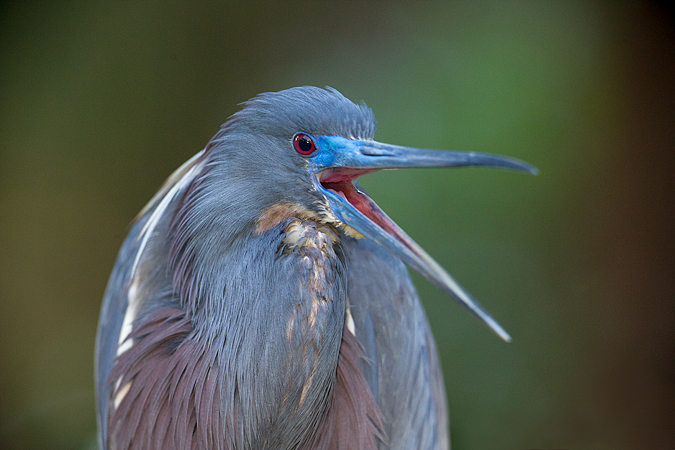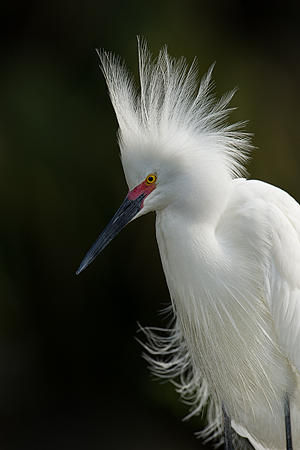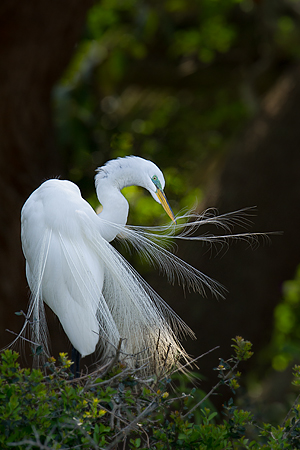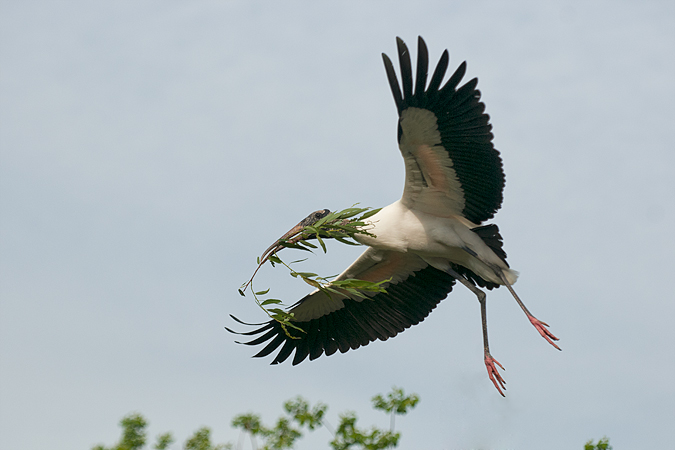It’s late March and spring has really started to take off. The herons and egrets are some of the earliest nesters in the area. I made my way down to the Alligator Farm in St. Augustine, Florida which is about a 2.5 hour drive from where I live. Alligators have a great relationship with the birds, they eat them. Well they will eat a bird if it gets too close, but what they really do is eat anything. That means raccoons, snakes, and anything else that might want to take an egg or a baby bird. So the birds find a place surrounded by water and alligators to keep predators away. In exchange, the birds have to be careful not to fall out of the nest or get too close, but for the most part it greatly increases the chance of successfully raising chicks.
One thing about photographing at a rookery is that it is a very cluttered place. There are ugly branches everywhere and birds everywhere. This makes it very tough to get a clean shot without a lot of distracting elements. One approach to removing the clutter is simply to come in tight on the birds. The birds at this rookery have no fear of people and will come with a few feet of you. This Snowy Egret is raising its plumes in a display to attract a mate. I choose an atypical lighting direction in this case to put extra attention on the plumage.
There is always so much going on at the rookery. It is relatively early in the rookery cycle right now, so many of the birds are busy trying to attract their lovers. Displaying those beautiful plumes requires a lot of work though. It takes a lot of tender care and cleaning to keep the plumes in tip-top shape. The cleaning, as with this Great Egret, can sometimes be as beautiful as the display itself.
For those lucky birds who have found their mate already, it is on to the next step. No, this Wood Stork is not ready to start delivering babies, but it does need to deliver branches and twigs to start building its nest. The sky around the rookery is constantly full of birds flying over. Some are just moving around, but at this time of year, many are starting to build their nests.




